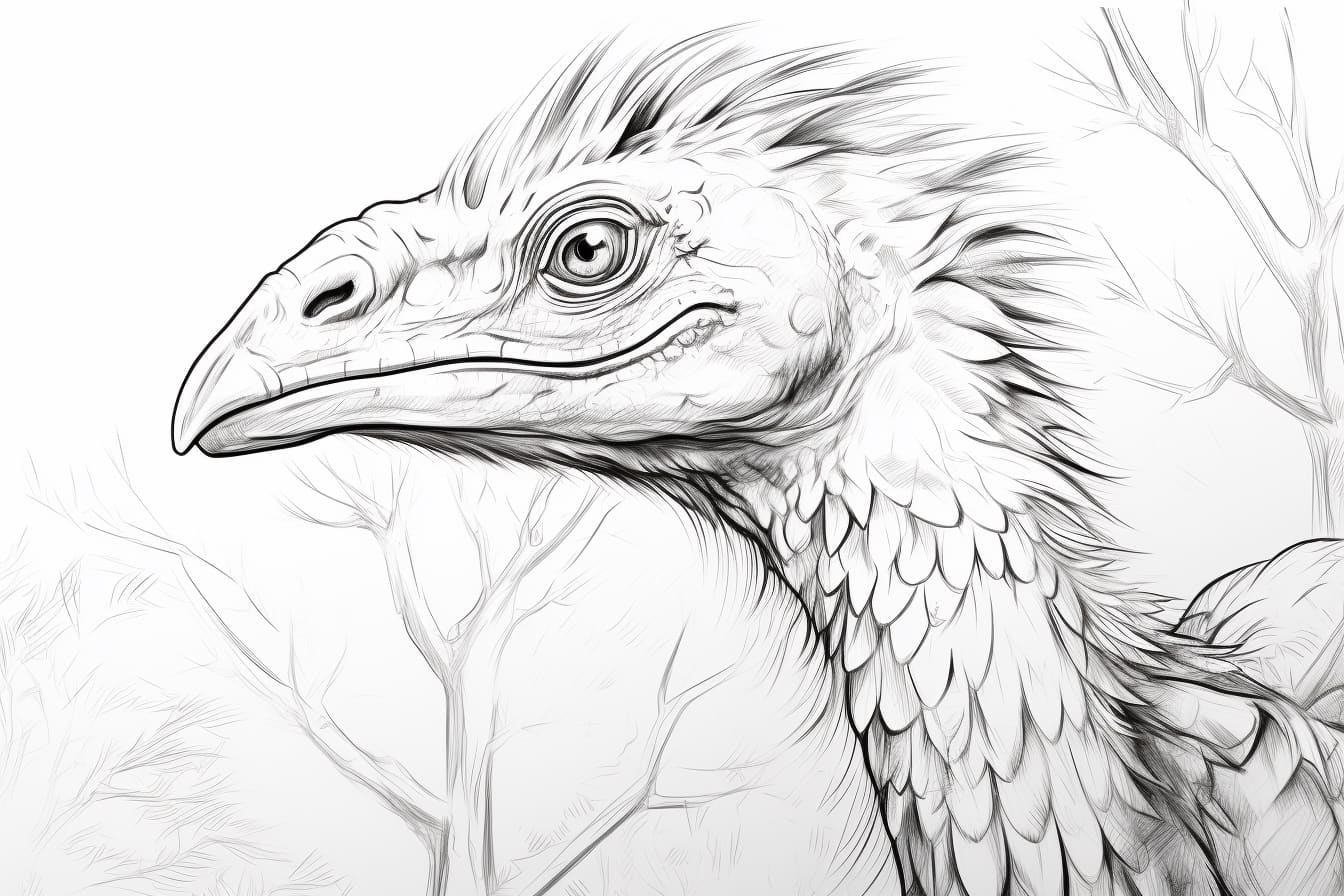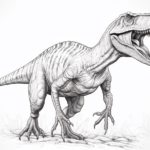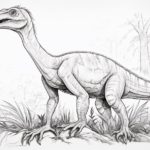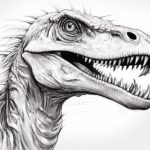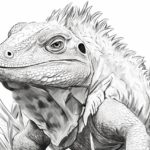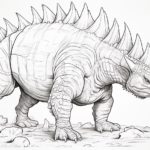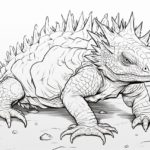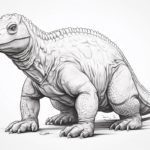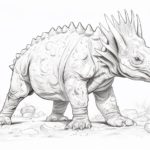Welcome to the world of paleoart, where we bring prehistoric creatures back to life through the power of drawing! Today, we embark on an exciting journey to capture the essence of the enigmatic Oviraptor on paper. Known for its striking appearance and mysterious behaviors, the Oviraptor has long captured the imagination of artists and scientists alike. Join me as we delve into the fascinating world of this feathered dinosaur, combining artistic skill with scientific accuracy to create a stunning portrait that pays homage to this ancient creature. Get ready to unleash your creativity and sharpen your drawing skills as we bring the Oviraptor to life in vivid detail!
Materials Required
To draw a Oviraptor, you will need the following materials:
- Pencil: for sketching and outlining the initial shape of the Oviraptor.
- Eraser: for correcting mistakes and refining your drawing.
- Paper: choose a good quality drawing paper that can handle the details of your drawing.
- Colored pencils or markers: for adding color to your Oviraptor drawing.
- Drawing pens: for adding fine details and textures to your drawing.
- Reference image: find a clear image of an Oviraptor to use as a guide for your drawing.
- Optional: blending tools such as blending stumps or tortillons for shading and blending colors smoothly.
How to Draw an Oviraptor: a Step-by-step Guide
Step 1: Gather Reference Images
Before starting to draw a Oviraptor, it’s helpful to gather reference images of this dinosaur species. Look for different angles and poses to better understand its anatomy and features.
Step 2: Sketching the Basic Shape
Start by lightly sketching an oval shape for the body of the Oviraptor. Then, add a smaller oval for the head at one end of the body. The head should be slightly tilted upwards to give it a more dynamic look.
Step 3: Adding Limbs and Tail
Sketch in the limbs (legs and arms) of the Oviraptor, paying attention to the proportions and positioning. The Oviraptor had long, slender legs with sharp claws. Add a long, thin tail extending from the body to complete the basic structure.
Step 4: Detailing the Head
Focus on the head of the Oviraptor by adding details such as the beak, eyes, and crest (if applicable). The beak should be sharp and pointed, while the eyes should be placed on the sides of the head for a more realistic look. Don’t forget to include the distinct crest that some Oviraptors had on their heads.
Step 5: Refining the Body and Limbs
Refine the body by adding details like scales or feathers, depending on the type of Oviraptor you are drawing. Add texture and definition to the limbs, making sure to show the sharp claws on its feet. Pay attention to the muscle structure to give the drawing a more lifelike appearance.
Step 6: Finalizing Details
Add any remaining details such as the pattern on the skin, shading to give the drawing depth, and any other distinguishing features of the Oviraptor. Take your time to make sure all the elements come together cohesively.
Step 7: Review and Adjust
Take a step back and review your drawing of the Oviraptor. Make any necessary adjustments to proportions, details, or overall composition to ensure a polished final result.
Step 8: Inking and Coloring (Optional)
If you prefer, you can ink over the final sketch with a pen or marker to define the lines. After inking, you can add color using colored pencils, markers, or digital tools to bring your Oviraptor drawing to life.
Step 9: Practice and Experiment
Drawing a Oviraptor may take a few attempts to get it just right. Practice regularly and don’t be afraid to experiment with different poses, angles, and styles to improve your skills and create unique interpretations of this fascinating dinosaur.
Conclusion
In conclusion, mastering the art of drawing a Oviraptor requires attention to detail, practice, and patience. By following the step-by-step instructions outlined in this article, artists can bring this fascinating prehistoric creature to life on paper. Remember to study the anatomy and characteristics of the Oviraptor, experiment with different techniques, and most importantly, enjoy the creative process. With dedication and perseverance, anyone can develop the skills needed to draw a realistic and captivating Oviraptor illustration.
Fun Facts About Oviraptors
- Oviraptors were not actually egg thieves: The name “Oviraptor” means “egg thief,” but this dinosaur was wrongly accused of stealing eggs when it was first discovered. It was later found that Oviraptors were actually protecting their own nests, not stealing from others.
- Oviraptors were feathered dinosaurs: Recent discoveries have shown that Oviraptors were covered in feathers, making them more bird-like in appearance. These feathers likely helped with insulation and display purposes.
- They had a unique crest on their head: Oviraptors had a distinctive crest on their skull, which could have been used for display or communication purposes. This crest varied in size and shape among different species of Oviraptors.
- Oviraptors were omnivores: While Oviraptors were originally thought to be egg-eaters, their diet actually consisted of a variety of foods including plants, small animals, and possibly eggs as well.
- They were fast and agile: Oviraptors were thought to be fast and agile dinosaurs, capable of running on two legs to escape predators or catch prey.
- Oviraptors were good parents: Fossil evidence has shown that Oviraptors cared for their eggs and young, similar to modern birds. They likely incubated their eggs and provided some form of parental care to their offspring.
- They lived during the Late Cretaceous period: Oviraptors lived in what is now Asia during the Late Cretaceous period, around 75-70 million years ago.
- Oviraptors were part of the theropod group: Oviraptors belonged to the theropod group of dinosaurs, which also includes famous carnivores like Tyrannosaurus rex and Velociraptor.
Overall, Oviraptors were fascinating dinosaurs with unique features and behaviors that set them apart from other species of dinosaurs.
Suggestions for Scenes and Settings for Oviraptor Drawings
Of course! Here are some specific suggestions for scenes and settings for your Oviraptor drawings:
- Nest Scene: Illustrate an Oviraptor carefully tending to its nest, with eggs nestled in the background. You can add details like surrounding vegetation and rocks to create a cozy and protective atmosphere.
- Prehistoric Forest: Place your Oviraptor in a lush prehistoric forest setting, surrounded by towering ferns, ancient trees, and other dinosaurs. This scene can showcase the Oviraptor in its natural habitat, hunting for food or interacting with other creatures.
- Desert Oasis: Draw your Oviraptor in a desert oasis setting, with palm trees, a watering hole, and a vibrant sunset in the background. This scene can highlight the adaptability of the Oviraptor to different environments.
- Volcanic Landscape: Imagine your Oviraptor in a dramatic volcanic landscape, with lava flows, smoking volcanoes, and ash clouds in the sky. This setting can add a sense of danger and excitement to your drawing.
- Jurassic Beach: Place your Oviraptor on a sandy Jurassic beach, with waves crashing in the background and pterosaurs flying overhead. You can add details like seashells, driftwood, and distant cliffs to enhance the scene.
- Mountain Pass: Illustrate your Oviraptor traversing a rugged mountain pass, with steep cliffs, winding paths, and snow-capped peaks in the distance. This setting can convey a sense of adventure and exploration.
- Swampy Wetlands: Draw your Oviraptor in a murky swampy wetlands setting, with twisted trees, murky waters, and fog hanging in the air. This scene can evoke a mysterious and eerie atmosphere.
- Canyon Sunset: Place your Oviraptor in a canyon at sunset, with dramatic rock formations, colorful skies, and a sense of vastness and grandeur. This setting can create a stunning and visually striking backdrop for your drawing.
Feel free to mix and match these suggestions or come up with your own unique scenes and settings to bring your Oviraptor drawings to life! Remember to have fun and let your creativity soar.

